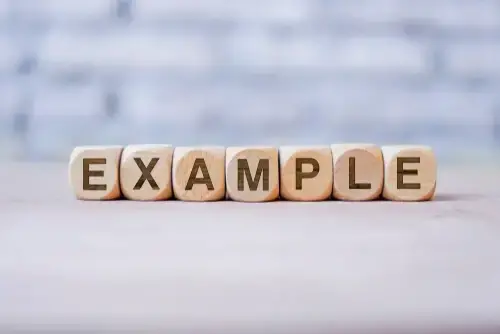Quality Criteria of Learning Management Systems in Detail
The selection of a Learning Management System (LMS) necessitates a comprehensive evaluation based on objective quality criteria to ensure that the chosen solution aligns with the company's needs - now and in future. This specialized article delves into the significance of quality criteria and provides examples related to Learning Management Systems.
Conformity: Ensuring Interoperability and Standards
The conformity of an LMS plays a crucial role in ensuring that it meets the requirements for interoperability and standards.
Interoperability: The LMS should support standards such as SCORM and xAPI to facilitate seamless exchange of learning content with other systems.
Accessibility: An accessible LMS should be able to integrate applications that provide text-to-speech and alternative text for images to ensure accessibility for people with disabilities.
Privacy and Security: The LMS should offer features for encrypting user data and complying with privacy regulations to ensure the security and integrity of user data.

- Example 1: An LMS enables seamless integration of learning content into various learning apps and platforms by supporting xAPI.
- Example 2: The LMS provides opportunities to integrate specialized applications for incorporating accessible learning content that complies with WCAG guidelines.
- Example 3: The LMS allows for the configuration of access controls and privacy settings in accordance with the requirements of GDPR (General Data Protection Regulation).
Flexibility: Adapting to Specific Needs
The flexibility of an LMS is crucial for tailoring it to the unique requirements of a company.
Customizability: A flexible LMS should provide customizable user interfaces and learning paths that can be adjusted to meet specific training needs and corporate branding.
Scalability: The LMS should be scalable to support a growing number of users without compromising performance.
Integration Depth: A flexible LMS should seamlessly integrate into existing systems to facilitate information flow and data exchange.

- Example 1: The LMS offers customization options, allowing adjustments such as adapting learning portals or correspondence to languages, national specifics, or corporate branding.
- Example 2: Thanks to its scalable architecture, the LMS can easily expand from a handful of users to thousands without compromising performance.
- Example 3: The LMS features an API that facilitates the integration of third-party tools and platforms to extend its functionality.
Reliability: Minimizing Downtime
The reliability of an LMS is crucial to ensure smooth operations.
Availability: A reliable LMS should have high availability to minimize downtime and provide users with continuous access to learning content.
Performance: A reliable LMS should offer fast loading times and smooth interactions, even with many concurrent users.
Support and Maintenance: A reliable LMS provider should offer efficient support and regular updates to quickly address issues and keep the software up-to-date.

- Example 1: The LMS offers SLA-guaranteed availability of 99.9% to minimize downtime.
- Example 2: The LMS's load balancing feature maintains performance even when thousands of users access the system simultaneously.
- Example 3: The provider offers technical support and rapid response times for addressing issues or inquiries.
Future-Proofing: Adapting to New Developments
The future-proofing of an LMS ensures that it can meet the changing demands of the educational landscape.
Technological Advancement: A future-proof LMS should be flexible enough to incorporate new technology trends, such as AI-enhanced learning features or virtual reality.
Long-term Support: A future-proof LMS should offer long-term support from the provider to protect the organization's investment.

- Example 1: The LMS features an open architecture that allows for the integration of future technologies like AI and VR.
- Example 2: The provider regularly offers updates to advance the LMS and meet the evolving demands of the educational landscape.
- Example 3: The LMS supports easy migration of content and user data to future platforms and versions.
User-Friendliness: Promoting Acceptance
The user-friendliness of an LMS is crucial to ensure its acceptance and effective use.
Intuitive User Interface: A user-friendly LMS should provide an intuitive and easily understandable user interface that facilitates navigation and interaction.
Mobile Accessibility: User-friendliness also means that the learning platform works smoothly on mobile devices, enabling flexible access to mobile-optimized learning content.
Personalization Options: A user-friendly LMS should allow for customizable learning paths and user profiles to meet individual learning needs.

- Example 1: The LMS user interface is designed to be intuitive, allowing new users to quickly navigate and start using it without training.
- Example 2: The LMS offers a mobile app with user-friendly navigation and touchscreen optimization for on-the-go learning.
- Example 3: Users can customize their learning environment by setting bookmarks, taking notes, and tracking their progress.
Validated Learning Management System
The term "validated LMS" may sound like a solid quality criterion at first glance, but upon closer examination, it becomes clear that it is not an objective measure of the quality of a Learning Management System (LMS). This is because validation does not assess the software itself but rather the individual use case and processes in terms of evidence security and compliance. Therefore, "validated LMS" is ultimately a term primarily used for promotional purposes.

To objectively assess the quality of an LMS, other criteria should be considered. A valid ISO certification, such as ISO 27001 or ISO 9001, provides a solid basis for evaluating LMS quality. These certificates demonstrate that the system complies with certain internationally recognized standards and meets specific security and quality requirements.
Furthermore, it is advisable to check references from the LMS provider. Practical application in real-world scenarios can provide valuable insights into the system's performance and reliability. It is advisable to have personal conversations with users of the reference installations to obtain firsthand information. This way, you can gain a comprehensive understanding of the strengths and weaknesses of the LMS and ensure that it meets your specific requirements. Ultimately, the quality of an LMS should be measured not only by its name but by its demonstrable capabilities and references.
Also actual use cases (best practise) can give you an idea of the quality of the LMS and the verndor's flexiblity and development capabilities.
Checklist for LMS Quality
Selecting an LMS requires a thorough analysis of quality criteria, including compliance, flexibility, reliability, and future-proofing. The continuous development and support from the provider play a crucial role. Functional and non-functional LMS requirements should be clearly defined.

-
Compliance:
- Does the LMS comply with relevant industry standards like SCORM or xAPI?
- Is the LMS accessible and in compliance with WCAG guidelines?
- Does it provide privacy and security features to meet legal requirements?
-
Flexibility:
- Can the LMS be customized to meet your company's specific requirements?
- Is it scalable to accommodate a growing number of users without performance degradation?
- Does it offer deep integration capabilities with existing systems?
-
Reliability:
- Does the LMS offer high availability to minimize downtime?
- Does it maintain good performance, even with a large number of concurrent users?
- Is there efficient support and regular maintenance provided by the vendor?
-
Future-Proofing:
- Is the LMS adaptable to new technological developments, such as AI or VR?
- Does it have a provider committed to long-term support and updates to keep up with evolving educational needs?
Ensure that both functional and non-functional requirements are clearly defined to guide your LMS selection process.

About us
Since 1998 SoftDeCC is working closely with major training centers and academies. This results in a unique experience with training requirements.
Our Learning Management System is designed to adjust to individual corporate learning processes and address evolving challenges. More...

Free Consultancy Appointment for you
Arrange for your free consultancy appointment to discuss your challenge with us.
Call +49 (0)89 / 309083930.





